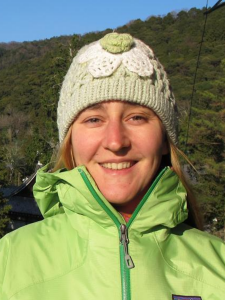
Rachel Gelet, Associate Professor at the GeM on the Saint-Nazaire site, will present her work in view of obtaining the accreditation to supervise research on Thursday 21 November 2024 at 2.00 p.m. (Building 17 – Seminar room) on the following subject:
Étude du comportement couplé des milieux poreux, appliquée à la géothermie profonde et à l’érosion interne
>> Find out more about Rachel Gelet’s career and work.
Composition of the jury :
- Stéphane BONELLI, Directeur de recherche, INRAE, Rapporteur
- Jean CÔTÉ, Professeur titulaire, Université Laval, Rapporteur
- Éric VINCENS, Professeur des Universités, Ecole Centrale de Lyon, Rapporteur
- Mahdia HATTAB, Professeure des Universités, Université de Lorraine, Examinatrice
- Giulio SCIARRA, Professeur des Universités, Ecole Centrale de Nantes, Examinateur
- Luc SIBILLE, Maître de Conférences, HDR, Université Grenoble Alpes, Examinateur
- Didier MAROT, Professeur des Universités, Nantes Université, Garant
- Jean-Robert COURIVAUD, Ingénieur Expert, EDF-CIH, Invité
Abstract :
Les travaux de recherche présentés dans le cadre de cette habilitation s’intéressent aux milieux poreux avec l’objectif de décrire : d’une part le comportement couplé thermo-hydro-mécanique des réservoirs géothermiques profonds, et d’autre part le comportement couplé hydro-mécanique des ouvrages hydrauliques en terre (digues ou barrages) sujets à l’érosion interne. Dans les deux cas, les approches développées s’appuient en grande partie sur la théorie des mélanges et sur la méthode numérique des éléments finis. Néanmoins, les travaux sur l’érosion interne ont conduit à utiliser
et à réaliser des essais de caractérisation en laboratoire afin de proposer une nouvelle loi de comportement. Ces travaux ont permis de caractériser les différentes étapes d’une érosion interne par suffusion et de porter un regard critique sur les paramètres correspondants. Ils ont également conduit à représenter la suffusion dans un volume élémentaire représentatif (VER) expérimental, grâce à une loi de comportement basée sur l’approche énergétique. Par ailleurs, cette loi a été comparée à d’autres lois de comportement. Pour compléter ce travail, des investigations ont été menées sur un barrage en construction et sur un modèle physique de digue. Les travaux doivent maintenant être étendus à la prise en compte des règles de filtration entre VER.

Rachel’s career as a researcher began with a joint PhD between two universities: the Université Joseph Fourier (now the Université Grenoble Alpes) and the University of New South Wales (UNSW) in Australia.
On the French side, she was supervised by Professor Benjamin Loret of the 3S-R laboratory, and on the Australian side, by Professor Nasser Khalili of the School of Civil and Environmental Engineering. The subject of her thesis was the thermo-hydro-mechanical modelling of double-porosity porous media, with an application to enhanced geothermal systems (EGS). This thesis lasted three and a half years, from September 2007 to March 2011. After her PhD, she went on to do a post-doctorate at the University of Sydney, Australia, from April 2011 to April 2013, on the modelling of fluid-solid interactions using the material point method (MPM).
Following these two professional experiences, Rachel obtained a position as a lecturer at the IUT of Saint-Nazaire and joined the GeM in 2013. She currently teaches in the civil engineering and sustainable construction department, and conducts her research within the Environmental Geomechanics Thematic Research Unit (GEOMEC) on the subject of the internal erosion of hydraulic structures in embankments. In this area, she is committed to adopting a systematic approach combining modelling and experimentation so as to be able to propose practical solutions to project owners.
Since January 2022, she has been co-leading the TRU GEOMEC.


